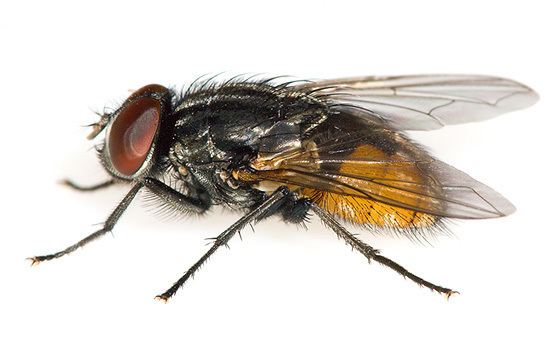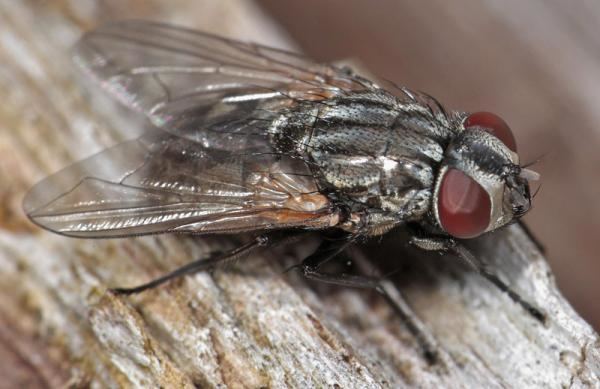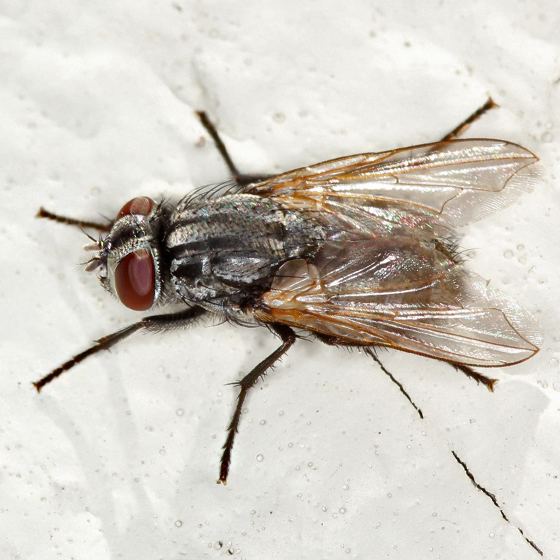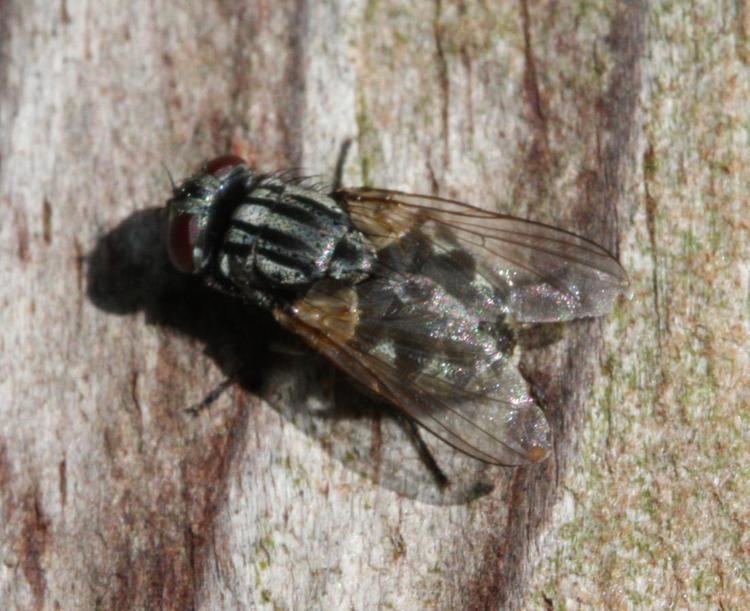Order Diptera Genus Musca Higher classification Musca | Scientific name Musca autumnalis Rank Species | |
 | ||
Similar Fly, Musca, Insect, Horn fly, Haematobia | ||
Fiese plagegeister augenfliegen musca autumnalis bel stigen kuh
Musca autumnalis, the face fly or autumn house-fly, is a pest of cattle and horses.
Contents
- Fiese plagegeister augenfliegen musca autumnalis bel stigen kuh
- Description
- Distribution
- Lifecycle
- As a vector of disease
- References
Description

The face fly is similar to the closely related house fly. Slightly larger, averaging about 7 – 8 mm long and grey in colour with four dark stripes on the thorax, with a grey-black patterned abdomen. Like many true flies, in the males, the eyes almost touch when viewed from above.
Distribution

Musca autumnalis is widespread throughout Most of Europe, Central Asia, also North India, Pakistan, China, and some parts of North Africa.

It has been introduced into North America around the 1940s, and now spread to cover from southern Canada into most temperate parts of the United States. It was also introduced to St Helena Island in the South Atlantic.
Lifecycle

Adult flies will emerge from winter hibernation around March to early April. During daytime, they feed on manure juices and plant sugars. On cattle and horses, they feed on secretions around the eyes, mouth, and nostrils. The adult flies will also feed on the hosts' blood through wounds such as horse-fly bites. A larger proportion of face flies on the host will be females, as they have a higher need for protein provided by animal hosts. At night, both sexes will rest on vegetation.

Females deposit eggs on fresh cow manure, and these hatch within hours after deposition. The yellowish-white maggots feed on the microbial flora and fauna of the manure and pass though three larval stages (instars), growing to about 12 mm long, then develop into white pupae. They emerge as adults about 10 to 20 days after egg deposition, depending on temperature.
As a vector of disease

M. autumnalis is considered a pest species, as it transmits eyeworm Thelazia rhodesi to cattle and horses, and pinkeye (infectious bovine keratoconjunctivitis) in cattle.
